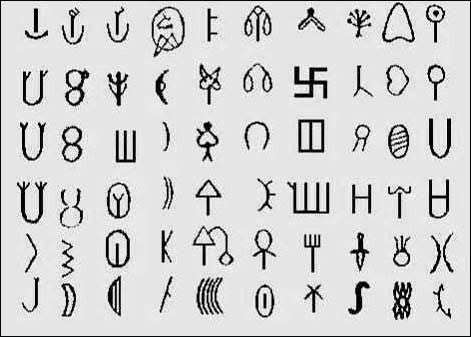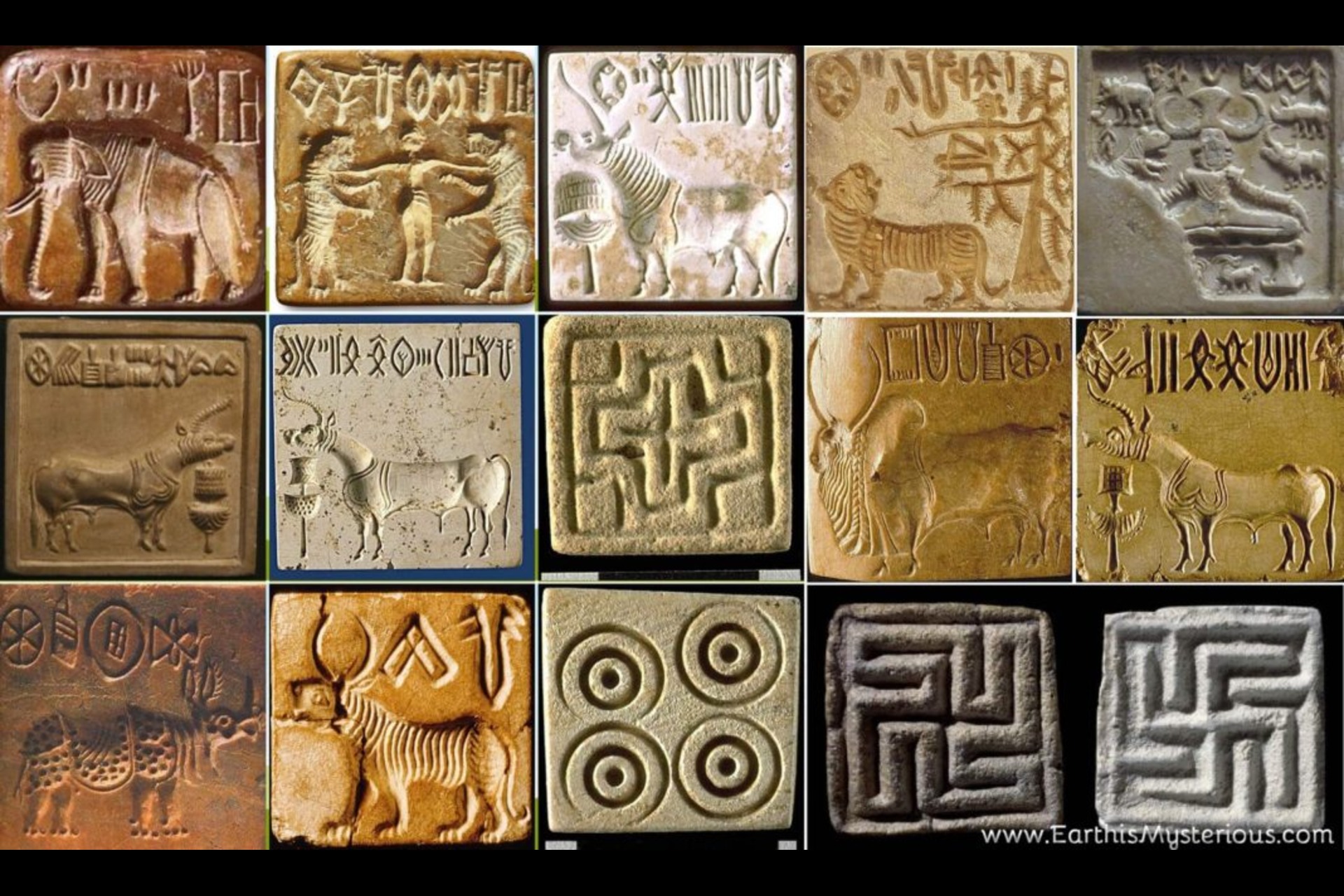Seals of Mohenjo-Daro
The Indus Valley Civilization (IVC), flourishing around 2600-1900 BCE, remains one of the most enigmatic ancient cultures. Among its many archaeological discoveries, the seals of Mohenjo-Daro stand out as crucial artifacts for understanding the Indus script. This paper explores the linguistic and symbolic dimensions of these seals, examines the leading decipherment hypotheses, and contextualizes their significance in trade, administration, and religious practices. Despite extensive research, the Indus script remains un deciphered, leaving open questions regarding the language, culture, and connections of the civilization with contemporary societies.
Introduction

The discovery of Mohenjo-Daro in the 1920s provided a wealth of artifacts, including thousands of small, square steatite seals engraved with animal motifs and inscriptions. These seals, believed to be used for trade and administrative purposes, have intrigued scholars due to their unique script and iconography. The inability to decipher the Indus script has posed a significant challenge in fully understanding the socio-political and economic structures of the Indus Valley Civilization.
The Indus Script – Structure and Characteristics
The Indus script comprises over 400 unique symbols, often arranged in horizontal sequences. Most inscriptions contain between4 to 7 characters, suggesting a logographic or syllabic writing system. Unlike other contemporary scripts such as cuneiform and hieroglyphs, the Indus script lacks long texts, making its interpretation difficult. Scholars debate whether the script represents a Dravidian, Indo-Aryan, or an entirely unknown linguistic family.
Symbolism and Iconography of the Seals
The seals feature a variety of motifs, including animals such as bulls, elephants, rhinoceroses, and unicorn-like creatures. The presence of a seated figure, possibly a proto-Shiva or priest-king, suggests religious or ritualistic significance. Some researchers propose that the seals were used as amulets or identifiers in trade, while others argue that they carried official or religious decrees.

Theories of Decipherment
Several theories attempt to decode the Indus script:
- Dravidian Hypothesis: Based on phonetic similarities with Tamil and other Dravidian languages, this theory suggests that the Indus script represents an early form of Dravidian writing.
- Indo-Aryan Hypothesis: Some scholars propose links between the Indus script and Vedic Sanskrit, though this theory remains contested.
- Non-Linguistic Theory: A controversial viewpoint argues that the symbols were purely mnemonic or symbolic rather than a formal language.


Comparative Analysis with Contemporary Civilizations
The seals of Mohenjo-Daro share similarities with Mesopotamian and Egyptian artifacts, indicating possible trade and cultural exchanges. Cylinder seals from Mesopotamia, for example, resemble Indus seals in function and design, suggesting a shared or influenced administrative system.
Challenges and Future Research
Deciphering the Indus script faces several hurdles, including the absence of bilingual inscriptions (such as the Rosetta Stone for Egyptian hieroglyphs). Advanced computational linguistics and AI-driven pattern analysis may offer new breakthroughs in the future. Recent findings, including the analysis of seal impressions, may provide additional insights into their usage and significance. The seals of Mohenjo-Daro remain one of the most tantalizing aspects of the Indus Valley Civilization. While their exact linguistic and symbolic meanings are still debated, their significance in trade, administration, and religious practices is undeniable. Further interdisciplinary research is essential to unlock the mysteries of the Indus script and provide a clearer picture of this sophisticated ancient society.

